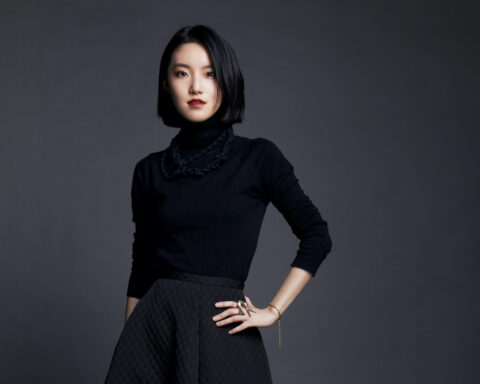Sign up to our newsletter to get updates on new articles.
It can be difficult to identify the originator of pop culture in China, depending on who you ask. If you were to ask several people who is the father of Chinese Rock & Roll, you would likely receive a wide variety of answers including some that are controversial. You may be told that it’s Cui Jian, who uses a red cloth to bind his eyes while performing, or that it’s Wang Feng, who married movie star Zhang Ziyi and whose music represents the working class. Were you to ask about the father of Chinese Hip-Hop, you’d receive even wider variety of answers ranging from Jay Chou to MC Hotdog, or from MC Jin to the Chinese-Canadian K-pop idol Kris Wu.

Design in China, especially contemporary design, has a strong resemblance to pop culture but with a rather simple patriarchal structure. The only “father” of industrial design in China is Liu Guanzhong, for his significant contributions to establishing the first Industrial Design University program in China in 1984. You may be wondering at this point why women haven’t featured much. The Wall Street Journal addressed this when it named Hung Huang as the Godmother of Chinese Designers for her vision for modern Chinese design. The “Godmother” is a term foreign to most Chinese design professionals and audiences. Hung Huang is not a designer in the conventional sense. She is a media celebrity and entrepreneur, hosting TV shows, authoring books, casting in movies and running a fashion magazine called OPENPAGE (previously known as iLook), which earned her the name “Chinese Oprah Winfrey” by the New York Times.

Huang comes from a noble and well-regarded family, and many China watchers describe her as China’s “princeling”. Her mother was the English tutor of Chairman Mao, and her stepfather was the Foreign Minister of PRC in the 1970s. At the age of twelve, she was sent to the United States by the Foreign Ministry of China as one of the children of high-ranking officials to study at Vassar College – the same college where Jackie Kennedy and Meryl Streep studied. After spending substantial time in the United States, Huang returned to China.
But why the Godmother?
The answer lies in the retail company she founded in 2010. Brand New China (BNC) was built as a brand and platform for debuting young and talented Chinese designers who have yet had a chance to shine. The brand signed more than 100 designers at its peak and showcased luxury “designed in China” products of fashion, jewelry, and furniture at one of the most high-end shopping arcades in Beijing. This is not just a story of a successful celebrity. Rather, if one looks closely through the lens of social class, we may better understand the nature and future of Chinese design and culture.

The Privileged Class and Design in China.
In contemporary Chinese media, key opinion leaders (KOL), the Chinese version of social media influencers, always play an important role in providing opinions and lifestyle choices for the masses. Before the Internet gained popularity, almost all KOLs came from noble families, such as musician Gao Xiaosong (currently the CEO of Alibaba Music), and film directors Jiang Wen, Feng Xiaogang and Chen Kaige. In the sense of classical communism, this privileged class (Tequan Jieji) formed the very first foundation of mass culture in China where design belonged. The modern notion of design was introduced to China in the 1980s when Deng Xiaoping decided to end the ideological conflict and open the Chinese market to the world. Before that, design was criticized as a lifestyle of the bourgeoisie. At the early stage of reform, encountering design meant you had access to the international “outer free world”. Chinese design historian, Wang Shouzhi, once mentioned that he had the earliest access to foreign design books and magazines because he was working for the Canton Fair — the only international import and export trade event in China in the 80s. In China, because of their unique access to information and cultural capital, those who came from the privileged class were ready to become pioneers or the first generation of cultural consumers and workers in a post-socialist society. Especially when China had decided to embrace the market economy, capitalism and its lifestyle. The elite has had the ability, resources and influence to shape Chinese mass culture. That is what Hung Huang was doing for Chinese design with her brand, Brand New China (BNC).

High Design and Hung’s vision for a Brand New China.
According to the theory of design culture, when the public talks about design, they usually refer to “High Design”— the iconic products, celebrity designers, famous brands with a high price and low volume of production, and a blurred boundary with art. Statistically the number of high design products is only a small fraction of all designs, but they still play crucial role in shaping people’s preference, trend and fashion. High design has become the topic of conversations and boasting among the Chinese middle class. On the other side the largest portion of all designs, aka “everyday life design” that may not have a fancy background story to tell, come from a famous designer, or be “sexy” enough to evoke a conversation, is still changing people’s daily lives. The middle class would rather talk about how Steve Jobs and Jony Ive’s designed the iPhone than about cheap iPhone copycats that helped to solve daily problems of millions of migrant workers in China. Indeed, if you look at Huang’s social media, you only notice the high design, taste, and fashion, e.g. Rei Kawakubo, Le Corbusier and a US$300 white T-shirt. In her recent interview in Hong Kong, she spoke about her wish to see wealthy Chinese millennials’ understanding of culture and taste as the future for Chinese culture. It may perfectly fit with the brand and vision of a classic in-between of museum and retail shop of high art and high street, and production of surplus value. But this raises a fundamental question: who is a Chinese designer really designing for?
As for BNC, the brand had already closed down in 2016. The failure of BNC perhaps is the epitome of Chinese high design landscape in recent years. It struggled in creativity, lost in cultural value, and looking for a moment to find its authentic way to attract more Chinese consumers.
Perhaps Huang was doing the right thing in the wrong time. Nowadays China is changing fast, so is people’s consumption choices and behavior on design. Chinese consumers are asking for not only better-quality products but superior design and aesthetics. According to the 2018 Chinese original design startup and consumer report, Chinese consumers’ demand for high design products has tripled since 2017 in comparison to previous years.
Although demand is on the rise in China, today Huang is no longer directly involved in the design business and instead writes books, casts in films and provides interviews, and she still cares about and supports Chinese designers. A few months ago, Huang was invited to attend the Paris fashion week by DIOR. During her attendance she posted on Weibo (Chinese social media platform): “I was in FANG’s show by Chinese design Yang Fang, it was really great. I am so proud of Chinese designers.” With all her efforts and growing popularity, the term of Godmother may indeed stay with Hung Huang for many years to come. ∎
Sign up to our newsletter to get updates on new articles.






